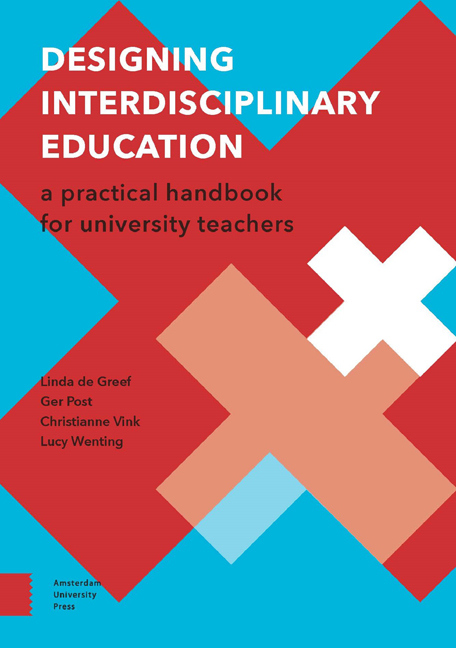Book contents
- Frontmatter
- Contents
- Acknowledgements
- 1 Introduction
- 2 An Overview of the Development Stages
- 3 Unravelling Interdisciplinary Understanding
- 4 Developing the Raw Sketch
- 5 Formulating Interdisciplinary Learning Outcomes
- 6 Embedding Integration in the Programme Design
- 7 Hiring and Engaging Faculty
- 8 Exploring the Teaching Philosophy and Didactic Methods
- 9 Assessment of Interdisciplinary Learning Outcomes
- 10 Interdisciplinary Teaching in Practice
- 11 Programme Assessment and Adjustment
- Appendices
- References
- Colophon
7 - Hiring and Engaging Faculty
- Frontmatter
- Contents
- Acknowledgements
- 1 Introduction
- 2 An Overview of the Development Stages
- 3 Unravelling Interdisciplinary Understanding
- 4 Developing the Raw Sketch
- 5 Formulating Interdisciplinary Learning Outcomes
- 6 Embedding Integration in the Programme Design
- 7 Hiring and Engaging Faculty
- 8 Exploring the Teaching Philosophy and Didactic Methods
- 9 Assessment of Interdisciplinary Learning Outcomes
- 10 Interdisciplinary Teaching in Practice
- 11 Programme Assessment and Adjustment
- Appendices
- References
- Colophon
Summary
‘Education is not the filling of a pail, but the lighting of a fire.’
William Butler Yeats
The staffing of the programme or course is crucial to the success of any interdisciplinary curriculum. It is obvious that an interdisciplinary team should consist of faculty from various relevant departments, but faculty members should be prepared to be challenged when participating in the process of integration. At least one or a few members of the teaching staff must conceptualise the various perspectives as a whole, and this can be quite demanding. This chapter addresses the following questions: What type of teacher is needed in an interdisciplinary endeavour? And once they are found, what can you do to express appreciation for their challenging work?
Features of an interdisciplinary teacher
The successful launch of a new programme depends heavily on the knowledge, skills, attitude and motivation of the teachers, as they are the most important pillars of the programme. Interdisciplinary programmes need a certain type of teacher. So the question is: What qualities should an interdisciplinary teacher possess?
Teachers are role models. If students are expected to acquire interdisciplinary skills such as critical thinking, collaboration and reflection (see chapter 3), teachers should have developed these skills as well. If we ask for high motivation from our students, teachers should be even more motivated. This is not unique to interdisciplinary teaching. However, in the case of an interdisciplinary programme, it is not enough to have teachers who are enthusiastic experts in their field. Interdisciplinary skills are needed as well. What does an interdisciplinary role model look like? What extra skills are required of teachers?
Most teachers will have a background in one discipline. Depending on the level of integration of knowledge needed for the course or programme, teachers are challenged to participate in the process of synthesising. One level of integration is marked by courses that feature a parade of faculty from different specialties in an interdisciplinary context. No interdisciplinary contribution is asked from these specialists, except from the coordinator who needs to conceptualise the various perspectives as a whole. Armstrong calls this ‘serial teaching’ (Armstrong, 1980).
- Type
- Chapter
- Information
- Designing Interdisciplinary EducationA Practical Handbook for University Teachers, pp. 92 - 103Publisher: Amsterdam University PressPrint publication year: 2017



